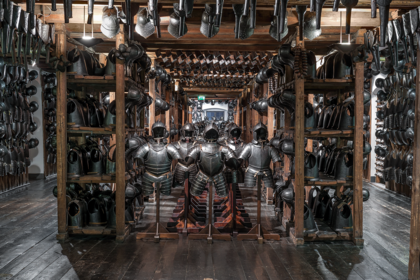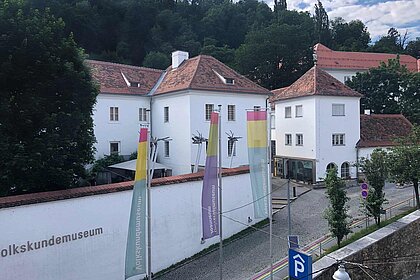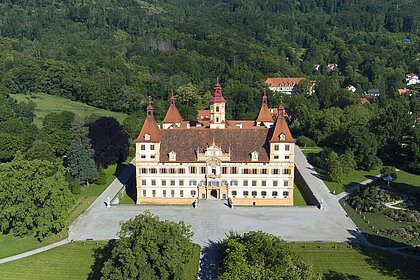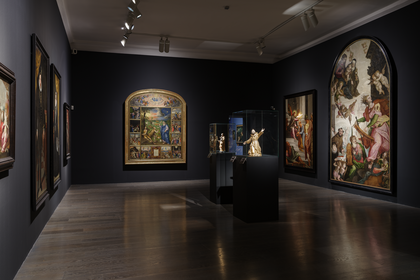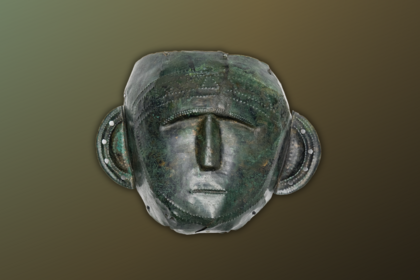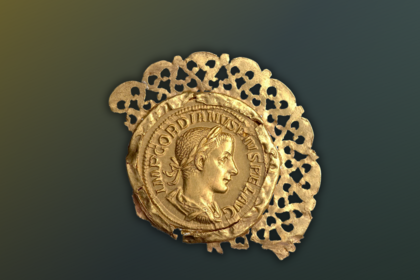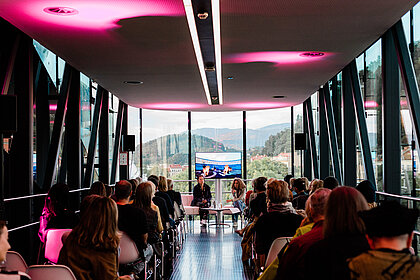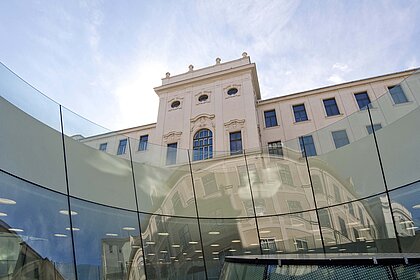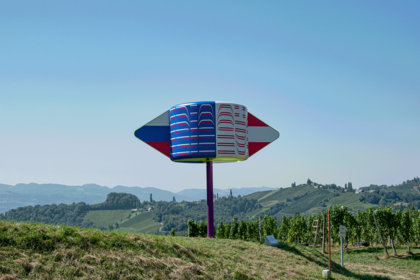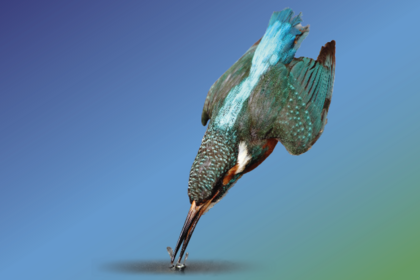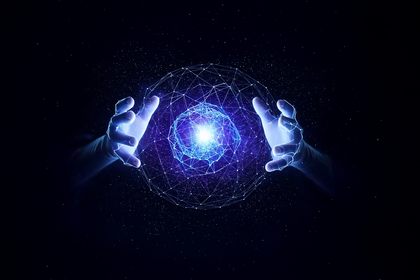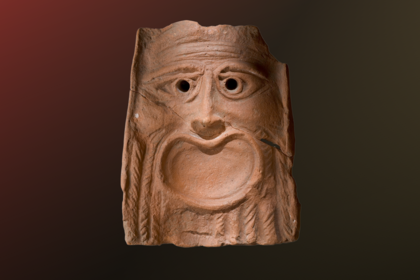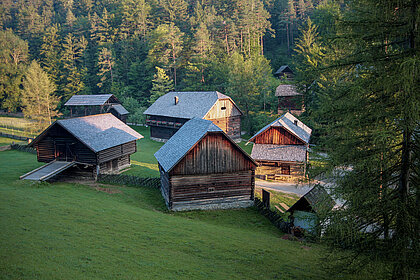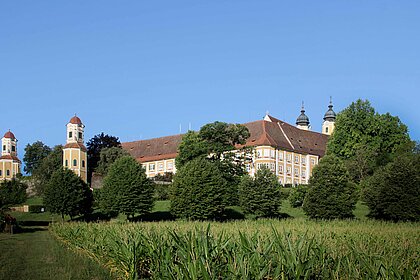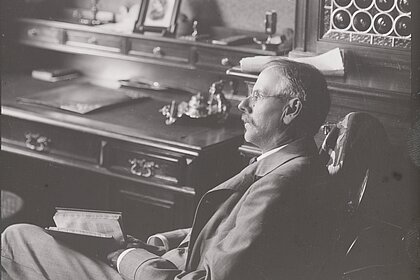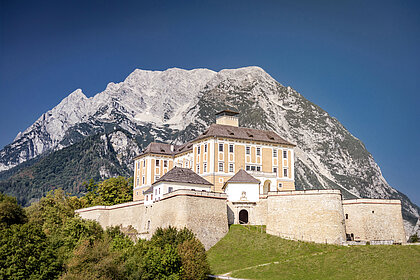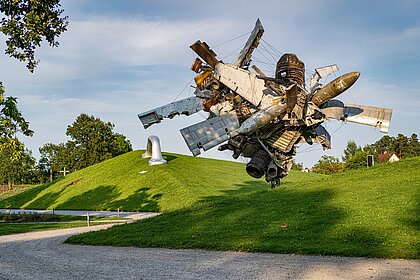The exhibition On Love Afterwards places questions of responsibility, visibility, and injustice at its core. For Milica Tomić, exhibiting is an active process – the focus is not on what is shown, but on what remains invisible: the space around the image and the conditions under which it emerges. Her works combine personal memory with political reflection and invite viewers to engage with violence, history, and social structures.
Milica Tomić. On Love Afterwards

Image Credits
How can art make the unspeakable visible?
Milica Tomić’s works reveal complex layers of meaning, showing how identity, politics, and history are interconnected. In her art, she fills the gaps of what images—such as those of war—do not show and invites reflection on their creation. Her artistic practice has evolved from individual to collective forms. The exhibition at Kunsthaus Graz presents selected projects and is complemented by an archive that encourages deeper study.
One Day, 2025 . One Day, 2009 . On Love Afterwards, 2003 . Alone, 2001 . The Final Letter “A”, 2003/2010 . Is There Anything in This World You Would Be Ready to Give Your Life For, 2025 . Portrait of My Mother, 1999 . Marija Milutinović, Knotworks, 2025 . XY... Ungelöst – Reconstruction Of The Crime, 1996/97 . I am Milica Tomic, 1999 . CONTAINER, 2013 . Cinema, School And War Of Independence, 2014–2015 . Reading Capital, 2004 . RE-ASSEMBLING – Art And Its Relation To Labour, 2013 . The Story About Two Artists In Action, 2001-2010 . Reconfiguration of Property Relations Over Land In Styria, 2018/2025 . Erlauf erinnert sich, 2000 . Aflenz Memorial, 2018
Show all
Works in the Exhibition
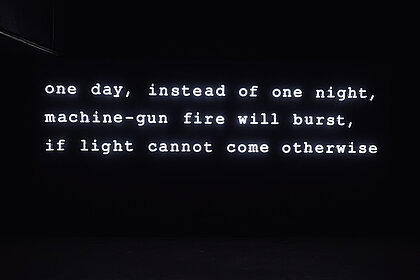
Image Credits
One Day, Instead of Night, Machine-Gun Fire Will Burst if Light Cannot Come Otherwise, 2025
LED light installation
Oskar Davičo - In memory of the imprisonment of Svetozar Marković
(translated from Serbian)
IX
Instead of plows, ox carts,
instead of hunger and instead of tears,
oh, one day instead of pain,
instead of sadness and instead of anger,
oh, one day, one day,
instead of robbery and police,
instead of a king and instead of a prince,
oh, one day instead of storms,
instead of war, instead of prosthesis,
oh, one day, one day,
instead of locks and a latch,
oh, one day, instead of one night,
a burst of machine-gun fire will flash,
if light cannot come otherwise
oh, one day, one day,
when the rose of the moonlight
and the sun of the heart, my comrades,
with them freedom and machines,
like the love that unites me with a girl,
oh, one day, one day,
everything will be beautiful, inevitable,
and passionate, it will be like a gentle soul
and when it is warm and when it is snowy,
life will be dear to everyone,
one day, one day.

Image Credits
One Day, Instead of One Night, a Burst of Machine-Gun Fire will Flash, if Light Cannot Come Otherwise, 2009
Artistic intervention in Belgrade, September/October 2009; dedicated to Anarcho-syndicalists of Belgrade
The performance was originally done in Belgrade, then repeated in Copenhagen and Rome. Photography and video recordings serve as documentation for creating a non-material monument to events that are not part of the public memory and public history of these cities. In Kunsthaus, we show selected photos from different performances.
The project begins with a series of walking actions in Belgrade in 2009, where Milica Tomić, holding an AK-47 (Kalashnikov) in one hand and a plastic bag in the other, traces the forgotten sites of anti-fascist struggles from World War II. The photographs, video material, and other documentation created during this action do not merely reenact past anti-fascist activities or revive a politics of memory. Rather, this 'material' functions as an artistic intervention into the social lethargy of the present, which remains indifferent to various forms of systemic, state-driven violence. By confronting political amnesia and the revisionist erasure of memories of anti-fascist resistance, the action evokes both a poetic and political articulation of today’s strategies for survival and solidarity, while calling for a socially emancipated coexistence.
Jelena Petrović
Today, whether we are in a direct war situation or not, we find ourselves in a state of permanent mobilization. However, is it possible to use armed force without establishing a strict division into the terrorist and the terrorized? Even if it were possible, it would have to be singular and entirely separate from all public opinion, political promises of identity groups, parties, movements or organizations, and would be distanced from the politics of terror and anti-terror. This description of a singular and universalistic position of the use of armed force is very much reminiscent of Partisan warfare, and of the politics that Yugoslav partisans conducted in the course of their antifascist revolutionary struggle in a war against war – for peace.
The action is an attempt to proceed from the position of a rebel, assuming an active position, without referring to the position of a victim, moving from the position of a victim onto the streets, with a machine gun in hand, carrying it simply and with determination, as if it were a supermarket carrier bag or an umbrella.
Milica Tomić
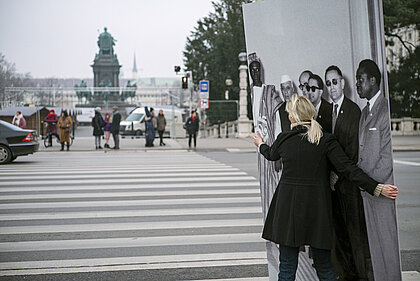
Image Credits
On Love Afterwards, 2003
Video, 10 min
On Love Afterwards presents interviews with four partisans—members of the People’s Liberation Struggle during WWII in Yugoslavia—about their decisions and motivations at the time to join the people’s liberation movement and the antifascist war. They also speak about liberation and anti-colonial wars as “a war against the war, for peace.” They reflect on what the antifascist struggle means today—in other words, why it remains urgently relevant. The title of the work echoes On Love Afterwards, a poem by Radovan Zogović, invoking its layered meanings of commitment, loss, and revolutionary memory.

Image Credits
Alone, 2001
Two-channel projection, 20 min
Two projections present two sides of local Serbian public fe/male representation: a famous female folk singer (a turbo-folk star) on one side, and three anonymous men playing a card game on the other. This male form of community is never represented in the media, reflecting how dominant power is reproduced at the micro-social level. The singer is never present in their community as a real person; she exists only within media representation. The media-constructed female body is a male phantasm, in which the female body serves as a surface or screen with a double function. For the safely distanced male gaze, it is both a battlefield for the expansion of globalization and the final point of defense against it.
Turbo-folk is a unique and popular music genre, a mixture of ‘Oriental’ and ‘Western’ influences, similar both to North African Rai and modern techno-dance music. Developed primarily in Serbia and quickly spread across the former Yugoslavia, the turbo-folk genre is symptomatic for changes on the global scene, and at the same time a culturally embedded and original contribution to the globalization process. Although at first glance turbo-folk appears to be a local phenomenon, it is in fact closely linked to globally significant regional events and developments over the past two decades. Emerging in the early 1990s, and particularly developing during the war in the former Yugoslavia, turbo-folk remains popular throughout the post-Yugoslav region and beyond. Once used as a powerful tool of war propaganda, today it represents a controversial model of integrative culture – one that connects people divided by national borders and newly formed identity clusters across this part of Europe. Empowered by high-level postproduction, new technologies, and media tools, the genre has generated a specific form of turbo-folk culture that particularly appeals to younger generations – those born and raised during the war. On the other hand, local art, academic, and cultural elites in the former Yugoslavia often reject the genre, identifying turbo-folk as a lowbrow, tasteless, mass-cultural, populist trend. Its performers and fans – the so-called turbo-folk population – are frequently portrayed as a culturally intoxicated ‘other,’ excluded from the canon of official high culture.
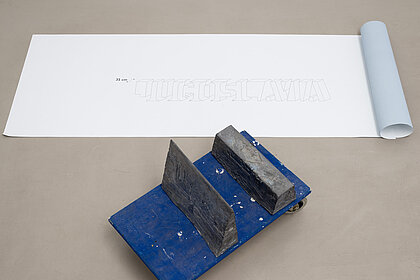
Image Credits
The Final Letter “A”, 2003/2010
Performances in Charim Gallery (2003) and in Museum of Contemporary Art Belgrade, Serbia (2010)
This art display is a convergence of two artworks that investigate the breakup of Yugoslavia and the nationalization of social property within institutions of art. Both works emerge in the context of a calm before the storm of sorts that heralds vicious struggles between contemporary art and cultural industries – as a systematic (systemic) occupation of the institutions of contemporary art.
In 2010, while working on an exhibition for the Salon of the Museum of Contemporary Art, I organized The Final Letter “A” performance, without an audience, in the empty building of the Museum of Contemporary Art that was undergoing renovation. This performance observes the façade of Yugoslav Pavilion in Venice’s Giardini, in 2003, that was transferred to the newly formed state of Serbia and Montenegro. After its renaming, the wall was left adorned with the inscription YUGOSLAVIA, executed in bas-relief on the building’s façade. I took the two spaces/slots within the final letter A and employed them as frames for molds I then used to pour out two lead objects. It also looks at the efforts of the Museum of Contemporary Art in Belgrade, after the wars and Yugoslavia’s breakup, to continue producing and exhibiting of Yugoslav artistic practices through its cultural policies, as opposed to the nationalization of social property in institutions of art.
I take the dislocation of the ‘archeological remains’ of the work of Jim Lambie, a representative of the new British art scene, displayed at the Breaking Step/U raskoraku (2007) exhibition – the last exhibition in the building of the Museum of Contemporary Art before its renovation – as a gesture of a politics of resistance to the present domination over the institutions of culture. The struggle for contemporary art is a logical follow-up to the struggle against neoliberal capitalist industrial production, in which comfort and consumerist enjoyment replace consciousness, reflection and thought. The dislocation of this work into the exhibition space of the 59th October Salon opens up the possibility to reconsider and investigate the role and the outcomes of the institutions of art within this struggle.
Milica Tomić
![Ausstellungsansicht „Milica Tomić. On Love Afterwards“ im Kunsthaus Graz, 2025, Is There Anything in This World You Would Be Ready to Give Your Life For? [Gibt es etwas auf dieser Welt, für das du bereit wärst, dein Leben zu geben?]](/fileadmin/_processed_/c/f/csm_Knotworks__3__cNK_c1c2dd5111.jpg)
Image Credits
Is There Anything in This World You Would Be Ready to Give Your Life For? [Gibt es etwas auf dieser Welt, für das du bereit wärst, dein Leben zu geben?], 2025
Materially-driven work situated between sculpture, textile logic, and the living-material force of mycelium / 3D-printed clay, cultivated mycelium
The oversized knot is based on tapestries by Marija Milutinović, Milica Tomic's mother, and derives from a special technique of tapestry weaving used by her. The Borromean knot as a conceptual starting point creates a connection between the real, the symbolic and the imaginative.
For the sculpture, a process for hardening material through growing, organic mycelium was developed in collaboration with scientists from the Graz University of Technology. In production, 3D-printed casing tubes made of fired clay were mounted on a load-bearing substructure, which were ‘inoculated’ with mycelium and thus grew together.
Through this artistic-scientific collaboration, Tomić summarizes interdisciplinary thinking and the creation of knowledge that transcends traditional disciplines.
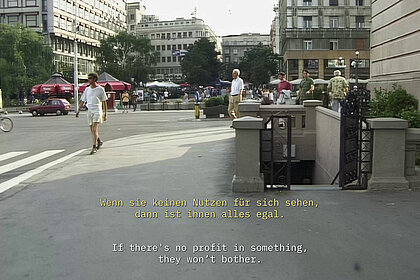
Image Credits
Portrait of My Mother, 1999
Video, 64 min
This slide and video installation is an attempt to reconstruct, i.e. to analyze, a very intimate conversation between my mother and me. This intimate conversation speaks also of the breakdown and defeat of the modernist politics, and it reveals the complex links between the trauma of the loss of Yugoslavian Modernism and the new politics of identity and gender. By subjectively filming the way from my to my mother’s house, being on the way through Belgrade streets this video in just one sequence separates the unity of the moving image and the sound. The central motive of the audio is the conversations between my mother and me, but the visual is about the urban space and everyday life in the condition of the war. The journey leads to my mother’s apartment in a Tito era periphery taking us past Otoman housing projects from the last centuries. The - lost - modernism, the discourses and the buildings, the Titoist modernism and its still effective utopian view are enrolled in this video.
Milica Tomić
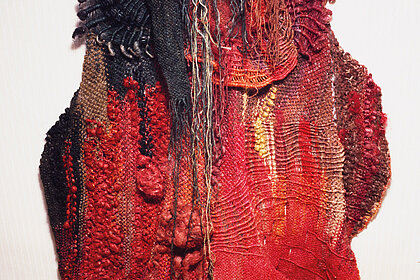
Image Credits
Marija Milutinović, Knotworks, 2025
Print on acrylic glass of a tapestry made of rope, coarse flax fibre, and other fibre structures
Knotworks is centred around an absent object, a large-scale tapestry made by artist’s mother. The absent object is represented only by its image as the sculptural tapestry no longer exists; it was discarded by the artist herself. Only a slide remained. The piece consisted of knots and weaving – a technique frequently used by female artists in the former Yugoslavia.
Marija Milutinović was a theater and television actress known for her abstract-minimalist style. She retired from the stage and began to weave tapestries, possessed to an almost spiritual degree by ideas of the natural and the organic, and of the Serbian tradition. Finally, she destroyed the tapestries. They only still exist in the form of slides.
For Tomić, the knot carries layered meanings; beyond its material form, it evokes the Borromean knot—a psychoanalytic model that articulates the interweaving of the Real, the Symbolic, and the Imaginary. In this context, the knot becomes a structure of subjectivation, binding individual identity to collective memory, trauma, and the political unconscious.
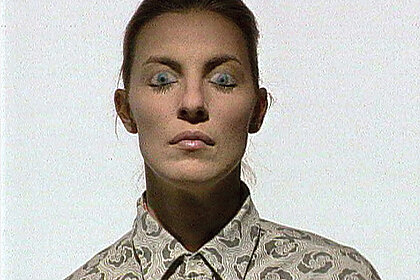
Image Credits
Aktenzeichen XY... Ungelöst – Reconstruction Of The Crime, 1996/97
Video, 13:57 min
To preserve the memory of the crime, focusing on the victims as a remembrance that transcends the traps of virtualization and mediatization. On March 28, 1989, ethnic Albanians, who were citizens of Yugoslavia at the time, protested against the constitutional changes in Serbia. Serbian police and army forces killed 33 men and women, a fact that was never publicly acknowledged. Based on photographs of the victims, I reconstructed their clothing piece by piece. I then reached out to my colleagues, contemporaries who were active in Belgrade’s cultural scene at that time, and encouraged them to wear the clothing of the fallen citizens and appear before the cameras. I borrowed the title of the German TV program Aktenzeichen XY UNGELÖST, which focused on crime reconstruction. In this show, viewers attempted to solve the crime by recognizing situations, objects, or perpetrators while positioned as potential witnesses. My colleagues were invited to the opening, and their involvement in the crime reconstruction allowed us to define our stance regarding terror and the politics of terror as both artists and citizens. This was an attempt to engage the art and cultural scene in Belgrade – particularly my generation – in addressing this crime and taking a political position. A crucial aspect of this reconstruction is the process itself: gathering information from my Albanian colleagues in Kosovo and collecting secondhand clothing from Serbian citizens who wished to remain uninformed about this crime. In this way, the clothes reconstructed for this art project were actualized by creating a political context within the community of terror, standing in for the memory of these traumatic events. The act of wearing these clothes situates this crime within a broader community and produces political space and conflict for both the ‘protagonists’ and the viewers.
Milica Tomić
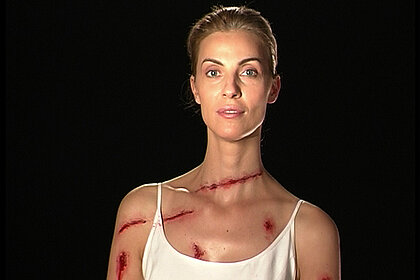
Image Credits
I am Milica Tomic, 1999
Video, 09:58 min, loop
My name is Milica and I got it in 1960. At first sight, these two trivial facts about the name and the year of birth have no importance, but they are vital for me. Namely, in 1960, I was born in Belgrade, in Yugoslavia, a country which in those years entered the phase of sudden modernization. A trend of giving children the international names such as Lydia, Maya, Selena, that is to say, not traditional Serbian names accompanied this modernization trend. I was named after my grandmother, my father's mother, who got it in the late 19th century, at the time when Serbia was a small country, actually, a no one s land, between the two empires, the Ottoman, and the Austro-Hungarian one, and when, following a regicide, the Karadjordjević, dynasty replaced the Obrenović dynasty. Renewing the Kosovo myth, the Karadjordjević started to dream the imperial dreams, remembering the Serbian medieval kingdom, whose empress was called Milica. During my whole childhood and youth, my name was out of trend, very altmodisch.
However, in the early 1980s, I began to meet people who pronounced my name with awe. In the few years of socializing with them, I suddenly felt pierced by an arrow representing the necessary equivalent of the following elements:
I = MILICA = SERBIAN = ORTHODOX CHRISTIAN.
This paradoxical choice to publicly deny my national and religious identity, while privately regarding it to be still a very important part of my personal identity, is reversibly proportional to a very paradox that lies within a national identity: it is produced totally artificially, but on a personal level is still experienced as completely natural and necessary, so, every community is an imagined one, but only imagined communities are real!
Milica Tomić and Branimir Stojanović, 1999, Belgrade
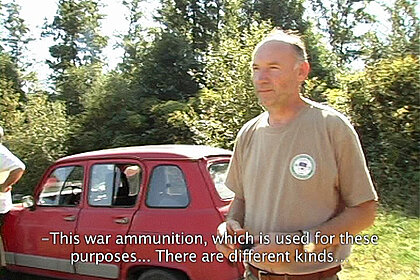
Image Credits
CONTAINER. Index Of War (2004–)
Container – Belgrade, 2006; Container – Moscow, 2013; Container – Poznan, 2017, Video
Container. Index of War is an ongoing project investigating the particular strategic form of reconstruction. This specific reconstruction concerns a crime that is a symptom of politics of the permanent, global war, the so-called ‘war on terror’. This new type of war introduced specific mechanisms of criminalization. It also redefined particular ethnic and religious groups and whole states outside the law. In November 2001, in Northern Afghanistan, thousands of Taliban fighters were loaded into sealed truck containers near Fort Qaala Zeini. They were kept without food, water, and air for several days during their trip through the desert to Sheberghan prison. When they started begging for air, the US Army-backed Northern Alliance troops fired upon the containers, as they later explained, ‘to make holes for the air to get in’. The survivors were shot dead at the Dasht-i-Leili Square and hastily buried in mass graves.
Thus far, the reconstruction of this crime has been realized by Milica Tomić multiple times: in Belgrade in 2004 and 2006; for the Sydney Biennial in 2006; for the 6th Gyumri International Biennial in Armenia in 2008, for the exhibition Expanded Cinema 3 — Mocumentary: Reality Is Not Enough - Moscow Museum of Modern Art - MMOMA, Moscow in 2013, Container Poznan, Stations Gallery within the Malta Festival. Curated by Goran Injac and Oliver Frljić 2017.
By repeating this reconstruction on various sites we explore the terms and conditions of shooting into the container. In different countries and states, different scenarios were created. Tracing back the history of each object and participant involved in the reconstruction draws local networks of relations between people and things. These networks of newly created relations/interconnections make visible, the local military, economic, and political structures that produce violence. At the same time, it points to the ways in which these structures participate in the global politics of war. In order for the Container to become an aesthetic object and to be exhibited, it has to pass the process of reconstruction and as such, it becomes an instrument that draws a geospatial landscape of the war today that still does not have a name.
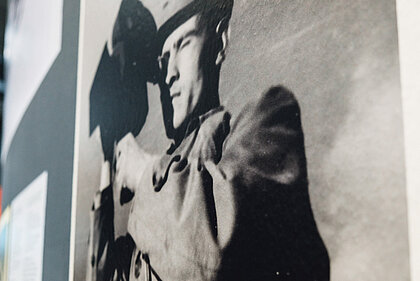
Image Credits
Cinema, School And War Of Independence, 2014–2015
Milica Tomić together with Stevan Labudović, Wall newspaper and posters, digitised 16 mm film sequences
Cinema, School, and the War of Independence uses the form of wall newspapers to introduce the logic of political complicity and trust through the image production practices defined by the work of photographer and filmmaker Stevan Labudović, as well as the political position of SFR Yugoslavia within the socialist world and the global network of Non-Aligned Movement countries. Labudović began his work at seventeen by making partisan wall newspapers during World War II. During the French settler occupation of Algeria in 1959, he was sent by the Central Film News Studio (Yugoslavia) to support the anti-colonial struggle during the Algerian War of Independence (1954-1962).
This breach of colonial rules led to a significant breakthrough: war images began to be produced not just by those responsible for the war, but by those whose voices existed yet were silenced by the dominant forces. From 1959 to 1962, Labudović spent nearly three years with Algerian partisans, carrying a camera in one hand and a weapon in the other.

Image Credits
Reading Capital, 2004
Video, 10 min
Sometimes the class struggle is the struggle of one image against another image, and one sound against another sound. Jean-Luc Godard
After his visit to Mexico in the 1930s, the avant-garde filmmaker Sergei M. Eisenstein planned to adapt Karl Marx’s groundbreaking Das Kapital into a film. Although the project was never realized, what remains today are Eisenstein’s notes, drawings and sketches remain as evidence of his preparations for the screenplay of this uncompleted project. As unprecedented as his project was, its radicalism lay not only in the decision to visualize the abstract notions and logic of Capital but also in the method employed, which, according to Eisenstein, would directly provoke dialectical thinking in audiences. He termed this method ‘dialactical’ or ‘intellectual montage’ (the formula being Thesis Shot 1 + Antithesis Shot 2 = Synthesis). Such a montage of thesis and antithesis shots results in a non-existent, invisible synthesis which takes place in the mind of the spectator.
Reading Capital refers to Eisenstein’s conception of a screen adaptation of Marx’s Das Kapital. However, this project is positioned from the perspective of the contemporary world. It is a reexamination of Marx’s central concept of surplus value in the context of American society, acknowledging that such a reading occurs within the framework of global corporate capitalism.
For this video, I asked prominent and respected citizens of San Antonio, Texas, to read passages from Marx’s Capital and then recite these quotes into the camera. The quotes referred to the definitions of the capital, surplus value and the proletariat, the class that introduces its manpower to the market as a commodity and, based on that, achieves the surplus value that remains in possession of the capital owners.
Milica Tomić
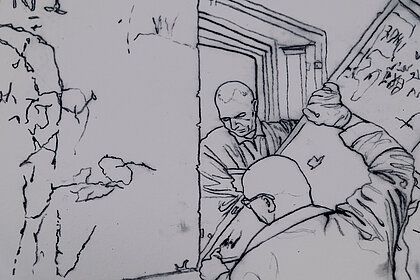
Image Credits
RE-ASSEMBLING – Art And Its Relation To Labour, 2013
Drawings: Luna Joksimović, Milica Tomić, Manja Topalović
RE-ASSEMBLING – Art and its Relation to Labour is a project investigating the interplay of labour, politics, economy and art within participatory production of a work of art. 'RE-ASSEMBLING' reveals the labour behind such an artwork; analyses its stability through the network of exploitation underpinning its production, as well as exhibiting strategies.
RE-ASSEMBLING analyses mechanisms of artistic practices that insist on producing a new type of collective, one devoid of repressive relations within collective labour. Whilst appearing to invite participation, the very act of calling for participation is also the site of the artist's control and monopoly over the outcome. It is precisely by appearing to be offering his/her creative labour and status up for collective use that the artist simultaneously reserves absolute authorship. Despite their claims on emancipating democratic practices, these mechanisms are, in fact, a reflection of the ideology of participation in civic society and parliamentary politics.
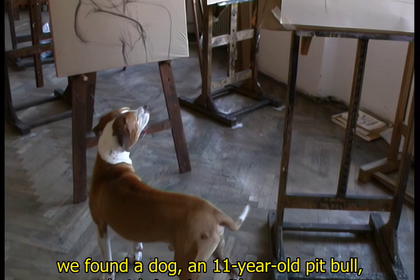
Image Credits
The Story About Two Artists In Action, 2001-2010
Milica Tomić in collaboration with Róza El-Hassan and artist Braco Dimitrijević, Video, 08:09 min
Once upon a time, far from cities and towns, there lived two painters. One day the king, hunting nearby, lost his dog. He found him in the garden of one of the two painters. He saw the works of that painter and took him to the castle. The name of the painter was Leonardo da Vinci. The name of the other disappeared forever from human memory. Braco Dimitrijević, Culturescapes 1976–1984
In October 2001, Milica Tomić and Róza El-Hassan organized a group exhibition of young art in Ljubljana, gallery ŠKUC (Student Cultural Center). The exhibition was based on the well-known story of the artist Braco Dimitrijević, "The Story About Two Artists" (1969). The exhibition was entitled FOUNDATIONS and was the first project of the newly founded institution Foundation – Róza El-Hassan & Milica Tomić, at which the Braco Dimitrijevic Award was granted. The Foundation aims to support young contemporary art and cultural exchange, with a focus on regional cooperation. The Róza El-Hassan Foundation primarily researches and supports works and projects that are imitated or realized in Belgrade and Serbia; Milica Tomić supports multi-regional projects and Hungarian art. All projects are then finally realized in cooperation on a common platform. The exhibition at the ŠKUC gallery was therefore the first to take place under the auspices of the Foundation.
"Foundations" commissioned a curator, who selected the participating artists, and a second panel of renowned local art critics, who are the jury for a Braco Dimitrijević Award. The curator responsible was Barney, a 12-year-old energetic and enthusiastic dog. Barney has spent three days at the Fine Art Academy in Ljubljana and selected seven artists/students whose works were exhibited for three weeks in ŠKUC.
The film was made in 2010 by Milica Tomić using film footage from 2001. that followed the curatorial selection process. Parallelly Milica Tomić invited Braco Dimitrijević to discuss his Story and the way the Story reveals within the process of Barney's curatorial choice for the exhibition FOUNDATIONS.
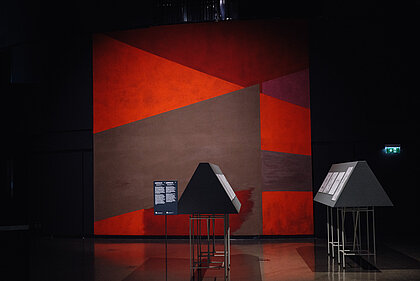
Image Credits
Reconfiguration of Property Relations Over Land In Styria (1938–1950), 2018/2025
Mural
“At each moment, all abstract relations, including theoretical relations, exist only under the condition of being rooted in practice, in the concrete. They are the contradictions of this immense cycle that produce, under the form of the class struggle, what one calls human history, and make this history human, that is to say, not a disembodied history but a history heavy with gravity, materiality and finitude, with human suffering, discoveries, and joys.” Louis Althusser on Abstraction
In 1938, with the ‘Anschluss’ of Austria by the Third Reich, the agricultural landscape of Styria began its major transformation. The introduction of the refinancing law dramatically changed property relations over land in Austria. The new law primarily meant a reduction in financial pressure and a series of benefits for large landowners (Großbauer). The law on agricultural debt relief in the state of Austria (‘Verordnung über die Entschuldung der Landwirtschaft im Lande Österreich’) enabled the refinancing of 90% of all agricultural debts in the country by 1939. This provided large landowners in Styria with cheap long-term state loans worth 100 million Reichsmarks. For them, this meant a much more developed infrastructure, the use of chemical fertilizers, and investment in modern agricultural machinery. Thus, the debt relief law enabled money for modernization, property repairs, and the expansion of agricultural holdings larger than 7.47 ha. In the same year, 1938, a compatible law on the status of properties (Erbhof / Reichserbhofgesetz) was introduced, which provided many privileges for owners. However, both laws meant the disappearance of smaller agricultural holdings.
In 1938, floods in Styria caused enormous damage, leading to a series of new investments by the Third Reich in Styria worth an additional 100 million Reichsmarks. What did these laws specifically mean for the agricultural landscape of Styria and property relations?
In 1939, 97% of the land in Styria was privately owned agricultural property. Of this, 50% were agricultural holdings under 0.5 ha, which accounted for only 4% of Styria's land, while 4% of agricultural holdings larger than 50 ha accounted for 50% of the total land in this region. With the introduction of the law on the status of properties (Reichserbhofgesetz), larger properties were protected, while more than 1,000 smaller properties were sold annually.
By 1942, 0.6% of the total land in Styria, which was owned by Jewish landowners, was expropriated and "Aryanized". In 1941, Styria annexed Lower Styria, a province surrounding Maribor in present-day Slovenia, which at that time was part of the Kingdom of Yugoslavia. Lower Styria was 98% agricultural land, and the Third Reich's goal was to increase Styria's total agricultural production through the ‘Anschluss’.
Despite enormous investments, annexations, expropriations, as well as infrastructural and technological improvements, crop yields actually declined. For example, maize production from 1937-1944 fell from 34 t/ha to 19 t/ha, and wheat yields dropped from 16 t/ha to 13 t/ha. The Reichserbhofgesetz was repealed in 1945, while the agricultural debt relief law from 1938 remained in force until 1999.
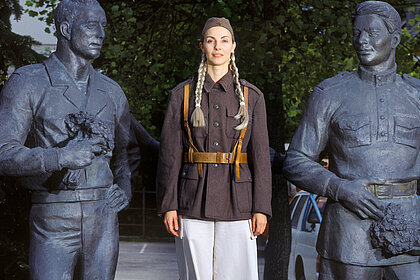
Image Credits
Erlauf erinnert sich …, 2000
Wallpaper: Installation in public space of Erlauf, 12 billboards
The meeting of two allied armies, the Soviet and American, in May 1945 in Austria, meant the victory over fascism and marked the end of the war as far as Austria was concerned.
This historical touch of two forces, happened in Erlauf, in a small place in Lower Austria.
1995, the Mayor of Erlauf decided not only to celebrate this event as the anniversary of the end of the war and the beginning of freedom, but also to build a memorial monument at the site where this historical event took place. He decided to invite two artists from both army sides: the contemporary artist Jenny Holzer from the American side, and Oleg Komov from the Soviet, actually the Russian side.
The piece by Oleg Komov, the Russian traditional sculptor, was created in the social-realist tradition. Two metal soldiers representing the Soviet and American allied armies flank a young Austrian girl in traditional national costume, who symbolizes the Austrian nation as she hugs the two allied armies.
In May 2000, on the 55 anniversary the art curator Hedwig Saxenhuber was invited to curate an open space contemporary art exhibition. She titled it Erlauf erinnert sich.
My work is referring at Oleg Komov’s monument.
What does it mean today, especially for an Austrian, to step on the place of the Austrian girl, actually to enter the space between two armies?
I invited 10 Austrians (5 women, 5 men) to take this space. Entering into this symbolic space, as the political space par excellence, means deciding whether it was then, and if it is now, in today’s Austria, a space of anti-fascist subjectivization, or instead, whether it marked a triumph over fascism, or a defeat and occupation. I took a photo of each of them, putting them on the billboards along the road. It was important the billboards to bee seen from the road, from car passing by, for their speed has actually animated and made the billboards alive. A large billboards were mounted at the exit of the place, in both directions, displaying a landscape.
Why landscape?
I have put my camera to the eyes of the sculptured girl, and made a shoot of what she sees. This is the view of the Austrian girl (from1945) on the Erlauf today.
Milica Tomić

Image Credits
Aflenz Memorial in Becoming, 2018
Video
Aflenz Memorial in Becoming is a long-term memorialization project based on the concept of Investigative Memorialization, coined by Milica Tomić, as a non-commemorative, transdisciplinary and collective approach to memorialization, that takes distance from the forced and frozen reconciliation of conflicted sides, understanding that any act of memorialization of the site cannot be a static stating of the facts. Today, it is imperative to understand World War II and National Socialism as a moment in time when colonial practices return to and took hold on the European continent. Having spread across territories and soils, these practices, once confined to the colonial context, continue to inform our ideas of minerals, species, race, and gender, permeating our behaviors, institutions, and imaginary into the present day.
In collaboration with the Municipality of Wagna; Institute for Art in Public Space, Universalmuseum Joanneum; Retzhof - Bildungshaus des Landes Steiermark in collaboration with coop-eb; and IZK – Institute for Contemporary Art, Faculty of Architecture, Graz University of Technology. The project is supported by the State Government of Styria, Department 9 Culture, Europe, Sport (Land Steiermark, Abteilung 9 Kultur, Europa, Sport).
The project was also presented in steirischerherbst'18 with the exhibition Exhibiting on a Trowel’s Edge. Research and investigative processes of Aflenz Memorial in becoming.
